ASRock FM2A88X Extreme6+ Review
by Ian Cutress on March 19, 2014 11:59 AM ESTASRock FM2A88X Extreme6+ BIOS
ASRock’s graphical BIOS now sits and a relatively happy plateau. After the first couple of generations, we have a system that is easy to read, easy to follow and is aesthetically pleasing to look at (in my opinion at least). The white on black with the high image quality background at least is better than most, with higher definition images being used in the BIOS throughout. ASRock has a tendency to try out a lot of new things with a chipset release, see which ones users respond to and develop those in future releases. In FM2+ however, there is not that much extra from FM2/A85X, due to the similarities of the platform.
The screen we first get into is called ‘Main’, and gives us the motherboard being used, the BIOS revision, the CPU name and speed as well as the total memory installed, where it is installed, and how fast it is running at. This is 85% of what I want in the front screen on a motherboard: other features such as CPU temperature, voltage and fan speed would also be welcome. There is an option to adjust the point of entry into the BIOS, thus enthusiast users such as overclockers can boot straight into the OC Tweaker menu.
The OC Tweaker menu separates out all the main overclocking options into sections for the CPU, DRAM and voltage. At the top is an EZ OC Mode (‘Easy Overclocking’), which offers options from 4000 MHz to 4500 MHz with our A10-7850K.
For finer tuning of the DRAM timings, the DRAM Timing control should be adjusted to manual. Unfortunately this is a little confusing here – ASRock should have an ‘Auto’ option for all the memory sub-timings in case a user wants to adjust just one.
The ‘Advanced’ tab gives further submenus relating to CPU, North Bridge, South Bridge, Storage and Super IO configurations. In the CPU Configuration menu, features such as ‘Target TDP’ are present, such as when using the A8-7600 Kaveri APU, which can be used in 65W or 45W mode.
Whenever ASRock adds new utilities to the BIOS, they typically go under the Tool tab. Here we have features that have graduated through multiple generations, such as the System Browser which gives a visual representation of the motherboard along with all the equipment installed:
There is also the Online Management Guard, which disables the network ports when the BIOS reaches certain hours of the day:
One of the newer features in the Tool menu is the Dehumidifier function, which we have covered in previous reviews. This allows the PC to enter a semi-sleep state to keep the fans spinning after the PC is turned off in order to equilibrate the air temperature inside and outside the case. In high humidity environments this helps reduce condensation inside the case as the PC cools naturally by forcing the equilibration. After talking with ASRock at Computex, ‘Dehumidifier’ works as an explanation in Chinese, although I think a little is lost in English as that word has a specific meaning. Nevertheless whatever the name, the feature is the same in any language.
The fan controls are in the HWMonitor menu, which gives our temperature sensor readings as well as fan speeds and voltages. For fans in the BIOS, ASRock gives pre-determined fan controls or allows users to specify a multi-point gradient:
I want to see this in every BIOS from every manufacturer. The only step up for this would be to combine something like MSI’s fan control representation system, along with a fan testing tool similar to what we see with Biostar, and we might actually have something approaching a proper adjustable fan control in a graphical setting in a BIOS.
Unfortunately one thing missing from the ASRock BIOSes is a Boot Override feature. Whenever I want to boot from a device once, I would like the option in the BIOS just to select that device and instantly boot from it. Almost all other BIOS manufacturers have this option, however in this regard ASRock is a little behind – the user needs to adjust the boot order to do so.


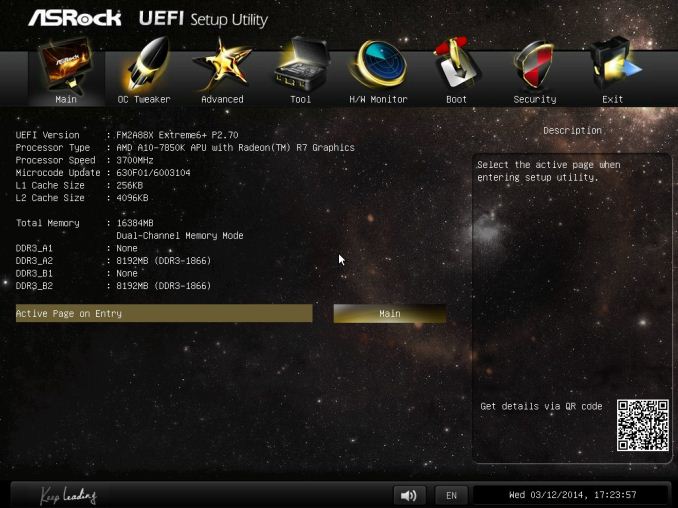

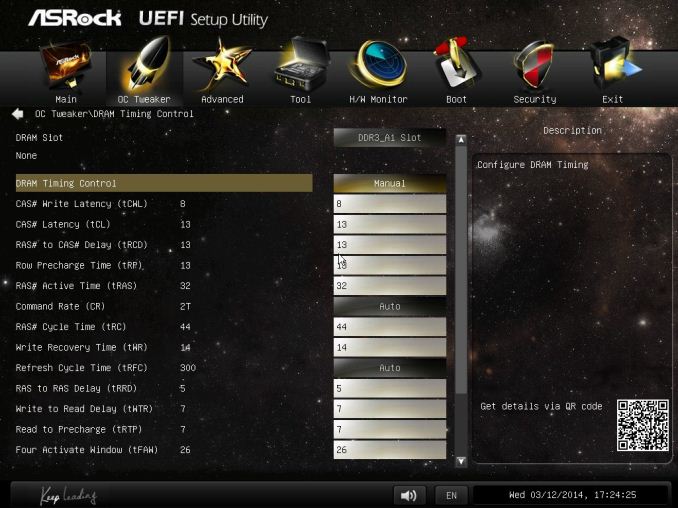
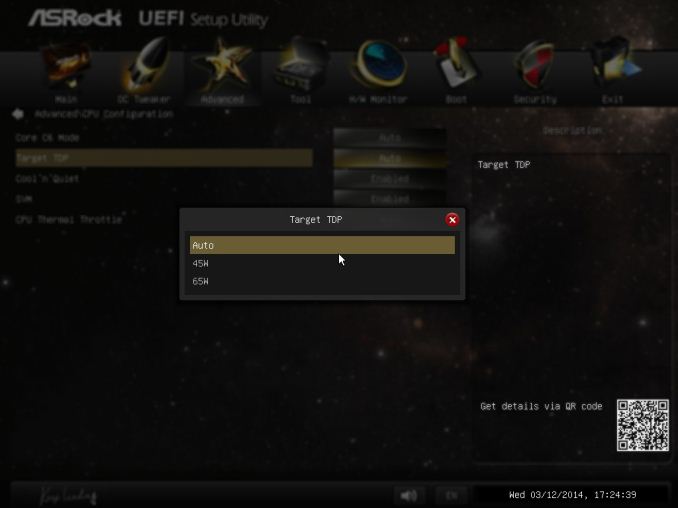
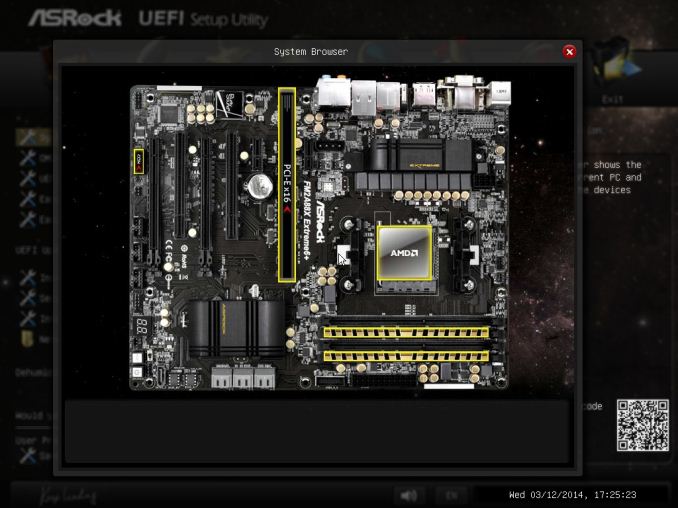
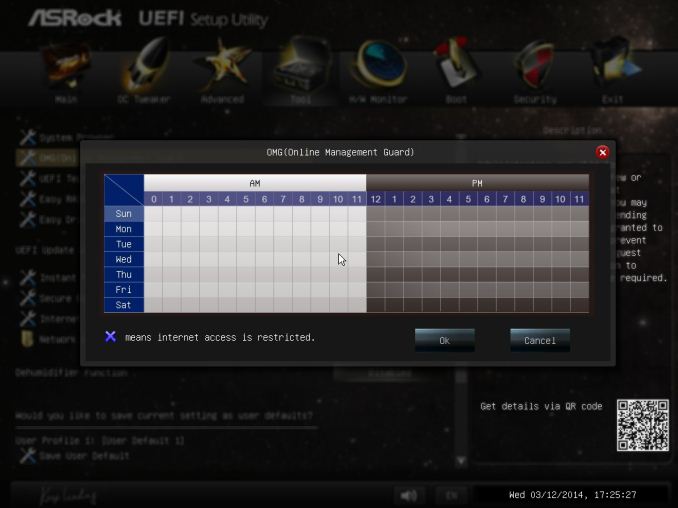
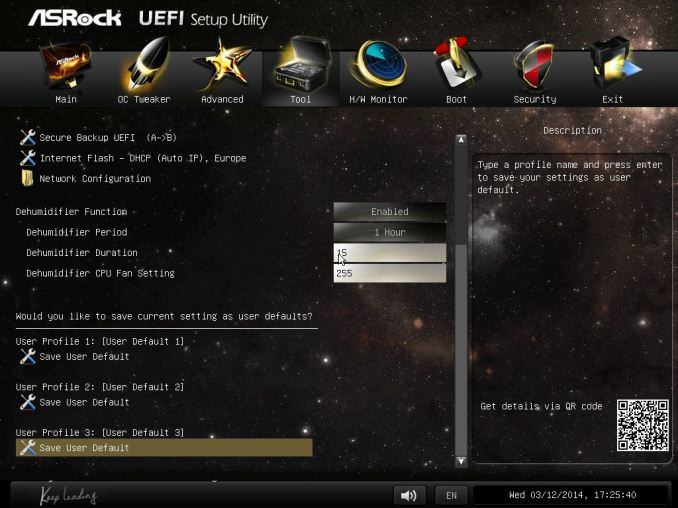
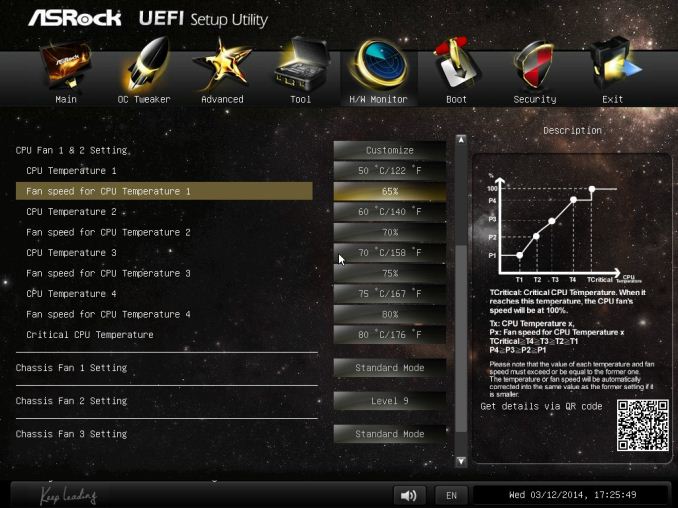














44 Comments
View All Comments
niva - Wednesday, March 19, 2014 - link
These benchmarks are making me depressed for AMD CPUs. I guess it's time to switch to Intel after not having purchased an Intel chip since 1996.nathanddrews - Wednesday, March 19, 2014 - link
Come on in, the water's fine.Malorcus - Wednesday, March 19, 2014 - link
I hear you man, I did the same with my current Ive Bridge CPU. I am looking to build a media computer using an AMD APU though. They still have their niche, but it is not in high end computing/gaming.ddriver - Wednesday, March 19, 2014 - link
You'd be surprised by the amount of needed and commercially viable tasks for which those poor CPUs are more than fast enough. It is a sad thing to see AMD struggling to compete with Intel's value products.Fallen Kell - Thursday, March 20, 2014 - link
AMD has sadly not had a real competing product in the high end side for 6 or 7 years now. On the low end, AMD was competing, until Intel decided to compete in this market segment. The last two updates that Intel has made were more focused on the lower end than on the high end. This is finally cutting into the one thing keeping AMD alive. I really hope AMD does survive because those of us that are old enough to remember know that Intel hates the consumer and only really pushes technology when it is competing. We would have CPU's that are only soldered directly into motherboards with no ability to upgrade, completely locked down CPUs with no ability to overclock, locked in memory bus speeds that are tiered based on the CPU/motherboard that you purchased with higher performance memory compatibility costing you extra, etc., etc....But I really don't see a way that AMD can compete at this point. They are still hemorrhaging money (not nearly as bad as a year ago when they lost $1.2 BILLION, but even after restructuring to cut 31% of their operating costs, they still lost $162 million last year). While I understood the reason for acquiring ATI, I believe ATI is worse off due to that acquisition. ATI went from being a profitable company competing well in their market, to one that is losing money and is seemingly almost a generation behind Nvidia in their offerings (I say this based on the fact that the brand new released top of the line AMD graphics cards can barely beat the last generation of cards from Nvidia in performance and can not come anywhere near the Nvidia offerings in power/performance or heat/performance, and Nvidia is getting ready to release its true next generation of cards even while they simply released the last generation of cards at their full potential to beat AMD's current cards now that AMD finally had a competing product). The major losses that AMD as a whole has, is taking its toll on the R&D AMD can afford to do in terms of increasing the efficiency of their designed with respect to power and cooling requirements while still being able to push the performance of their cards.
Demiurge - Friday, March 21, 2014 - link
Funny, I thought the same thing about Intel CPU's when GPU's started to encroach on the high performance features such as physics, ray-tracing, signal processing, and other high intensity applications. There's a bigger picture that I think a lot of people miss. The market has already shifted away from CPU's being the centerpiece of high performance applications. AMD has the right strategy with buying ATI and the paradigm of Heterogeneous Computing, but like Intel with the P4: it's too little too late. If they had the software, they might've been able to pull this off, but that is exactly what they are trying to do with Mantle. I think only unanimous adoption would've guaranteed a win. It was a big risk, and it would have been an amazing upstart, but I don't think it will pay off as much as they need it to. Just a modest opinion... and so a long rant ends... ;-)pandemonium - Thursday, March 20, 2014 - link
AMD hasn't been competitive to Intel for the consumer since 1999 or so? They've always been cheaper, and always been far lower in gaming and general desktop usage results as well. You are very, very, very late to the party, lol.mr_tawan - Thursday, March 20, 2014 - link
I believe it was Intel Core series (2006) that started to get ahead of AMD's CPU. Before that, AMD CPUs was both perform better and cheaper. Intel CPUs were power hungry and expensive while did not yield excellent performance.The raw ALU performance on the current line of AMD CPU is quite low because of the design decision to reduce the space occupied by the CPU while add even more GPU on the die, and then make them work together more nicely. It's the direction the AMD heads to.
I believe that one day even the FX line would be APU just like those A-series.
Vinny DePaul - Thursday, March 20, 2014 - link
I feel your pain. I am an AMD fan. I want to keep using AMD but the CPU is running too hot. It is heating up the room! I switch to Intel. It is just easier.... I hope the AMD's involvement in PS4 and Xbox One will shape the future in games and software.Xpl1c1t - Thursday, March 20, 2014 - link
This is exactly what I did going from a Athlon XP Palomino, to Athlon 64 Venice, to a Core i5 Lynnfield.I'd consider purchasing an AMD processor again if the whole APU thing becomes quite competent and powerful at a smaller and more efficient node. I'd promptly and gladly buy an APU with the equivalent of 2 IVB cores and a 7870 onboard if it could me mounted on a Pico-ITX board...